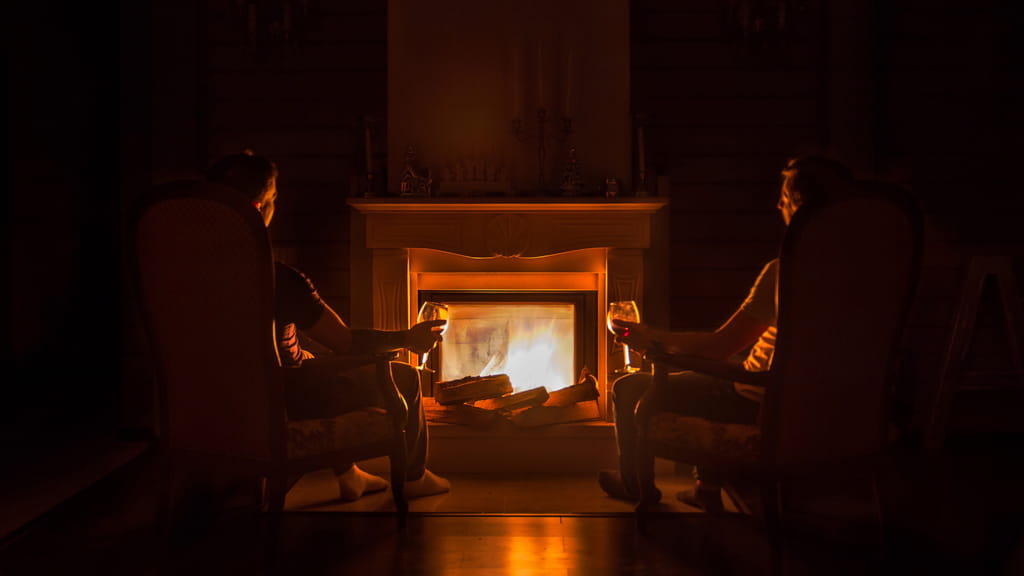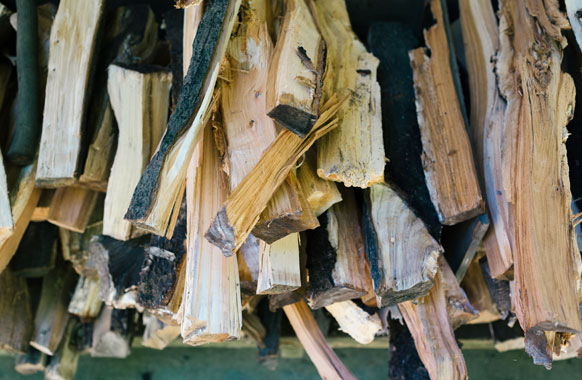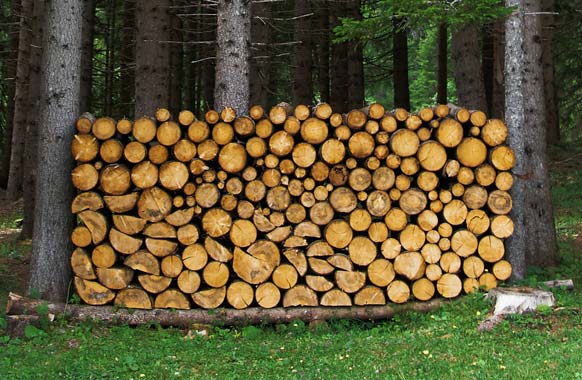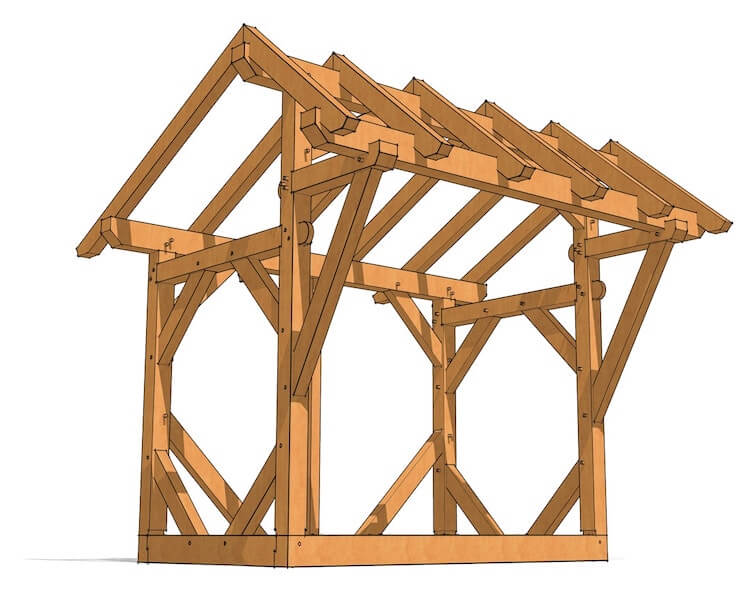
As home heating costs climb, many people are becoming more interested in putting their fireplaces and wood stoves to good use when the weather cools down. While some enjoy an outdoor campfire every now and then, others are using wood year-round in an attempt to save on heating costs and keep their home warm as the colder seasons set in.
Once you have cut the trees you need or placed an order for wood, you have to store it. If not properly stored, it can get wet and be useless to you. Knowing the best way to keep your wood in good burning shape is important to get the most out of your effort and money.
Knowing When Your Wood is Usable
If you have cut your own wood for firewood, you have to make sure it’s ready for burning. Newly cut wood is considered “green” and you do not want to use it right away in your fireplace. It’s important for the wood to season or age. It needs to be ripe before you use it, otherwise, it can cause dangerous creosote to build upon the inside of your chimney when you burn it. Creosote can cause smoke to back up into the house when you use your fireplace or cause a chimney fire, which is even more dangerous. Along with the smoke and fire risk, improperly seasoned wood offers very little heat once it has been lit. It has a short burning time and can cause carbon monoxide to build up as well. By using green wood, you are wasting your time and money and possibly creating an unsafe home situation.
Keeping these warnings in mind, make sure your wood, whether cut by you or someone else, has been cured or seasoned for the proper amount of time. Season for at least 6 months to a year to make sure the moisture in the wood is reduced so it burns to its full potential without any harmful effects.
Best Place to Store Your Firewood

While it may sound silly, storing your firewood in the wrong place can cause some issues. Most people keep the greenwood outside but bring the seasoned wood inside to keep it close to the fireplace or stove. They assume by having it indoors, they save time and energy from lugging it in from the outside every day. The truth is that indoor storage is not a good idea. No matter where you get your wood, seasoned or unseasoned, it is going to have more than just a few leaves and branches with it. This is especially true for seasoned wood that has been sitting for months. Chances are there will also be spiders, ants, termites and other critters that have made the wood home while it aged. If you bring the wood into the house, then these extra bits and pests come with it. Store the majority of your wood outside so it not only keeps the pesky visitors outside but it will also continue to age. Having it in the house means there is little airflow to continue drying.
When choosing an outdoor space for your wood, some places are better than others. You want a space that is fairly dry and open to moving air. Make sure the wood is at least 20 feet away from any window or door leading inside to make it harder for bugs and mice to make their way in the from the woodpile. Do not stack it right up against a wall as you want it to have some airflow all the way around, especially if it’s green.
Best Storage Technique for Your Firewood

While the storage of firewood isn’t complicated, some storage methods are better than others. Once you have your storage area picked, you can start stacking. Do not go over four feet for safety reasons and make sure it won’t tumble. Use a solid rack or posts to keep things in place. Pallets are also helpful in keeping wood off the ground to ward off moisture. Leaving them on the ground means there is more chance of mold and rot occurring on the bottom pieces due to dampness.
Green firewood is a little more complicated to stack because it needs to be bark side down so any moisture will continue to evaporate from the wood. Once it is seasoned, then it is fine for the logs to be placed bark-side up. Bark on the top becomes a natural cover from the outdoor elements. Either type of wood needs proper storage stacking not only because an unorganized pile is difficult to pick from but it also doesn’t allow for proper airflow around the inside of the stack. The excess moisture caught in the center will simply cause it to rot, leaving it completely unusable.
Keeping the Elements Away From Your Investment
Keeping means that it will be nice and dry and ready to burn in the damp and coldest temperatures.Whether you cut your wood yourself or purchased it from someone, it is worth both money and time. Make sure it is stored with care until its ready for use. If the wood is green, make sure that the front and backside of the logs are open to the air so they can dry out. Once your wood is no longer green, then you can find a cover that fits it to make sure it stays dry until you are ready to use it.
The other option is to put it in an outside building like a barn or shed or under an eave where the elements are kept to a minimum. You always want to make sure there is adequate air moving around it otherwise it will rot and end up as a home for rodents and other wildlife. Make sure there is not a lot of scrap kindling lying around and if the wood stack is out in the open, keep the grass trimmed around so it stays dry along the bottom.

This is some really good information about firewood storage. My father wants to make a little shed around his firewood at his cabin. It is nice to know that I will want to consider if I should cut the wood myself or get an expert to do it. Personally, I would want to get a professional to cut it. That just seems like it would be easier and make the process go faster.